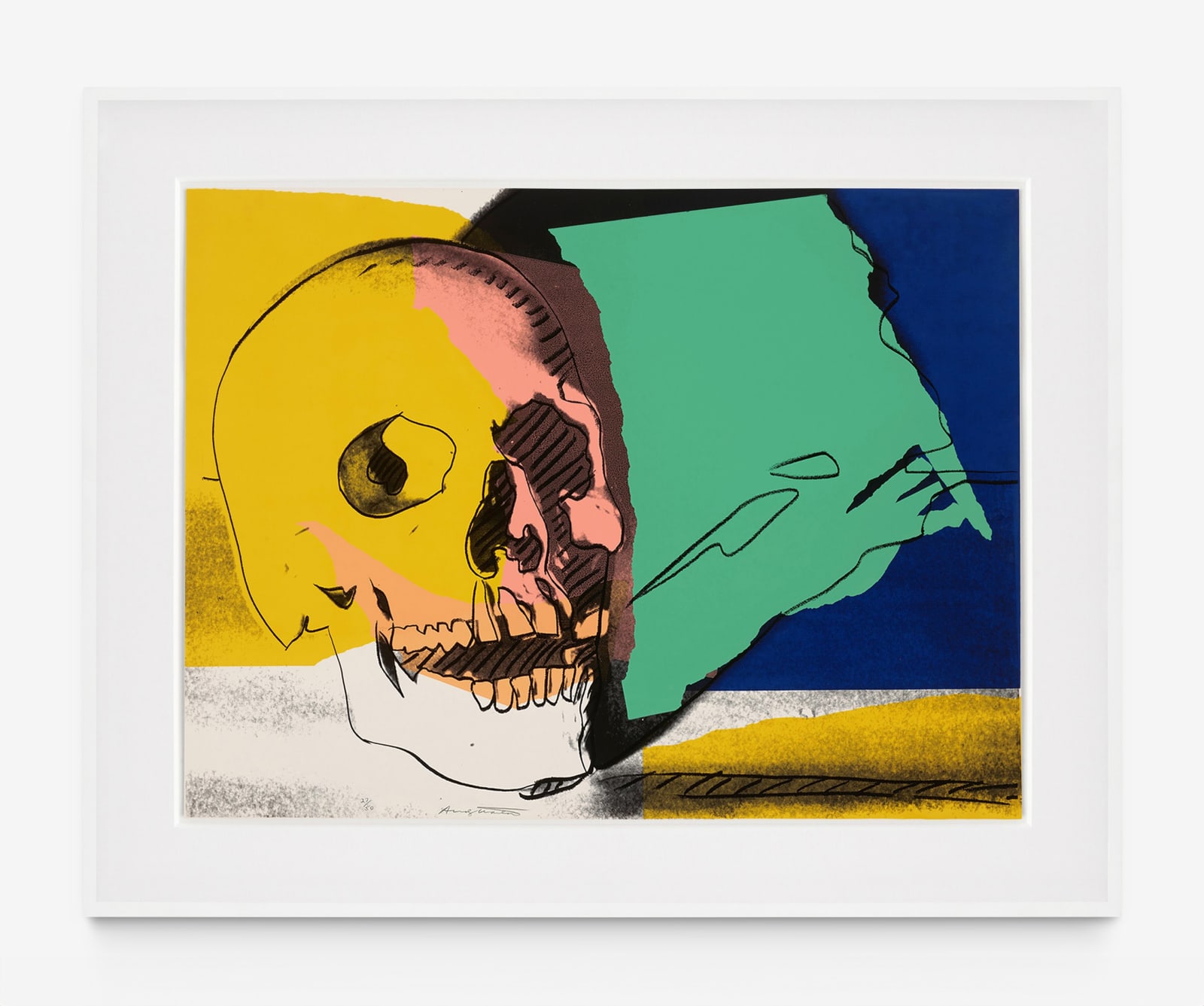-
Artworks
Andy Warhol
Skull (FS II.158), 1976Screenprint in colors on Strathmore Bristol paper.30 x 40 in (76.2 x 101.6 cm)Edition of 50, plus 10 AP© 2025 Andy Warhol Foundation for the Visual Arts / Artists Rights Society (ARS), New York. Courtesy of Zeit Contemporary Art, New York$ 85,000.00Andy Warhol's Skull series from 1976, particularly 'Skull II.158,' encapsulates his deep-seated fascination with mortality, a theme recurrent throughout his oeuvre. Completed in 1976, this series sees the human skull,...Andy Warhol's Skull series from 1976, particularly 'Skull II.158,' encapsulates his deep-seated fascination with mortality, a theme recurrent throughout his oeuvre. Completed in 1976, this series sees the human skull, a timeless symbol of mortality, through Warhol's distinctive lens. The series presents variations of a single skull in differing colors and perspectives, emphasizing the versatility and mutability of image repetition—a central theme in Warhol’s art. The present work, specifically, showcases a bright yellow skull in stark contrast against a pieced-together background of blue, green, and ochre. The skull is dissected by a harsh black shadow that divides its visage, hinting at the dualities of life and death, presence and absence. The interplay of vivid colors with the subject of the skull encapsulates Warhol's ability to straddle the line between the profound and the commercial.
The visual impact is immediate and unnerving, serving as a modern interpretation of the traditional vanitas—a genre from Western art history emphasizing the transient nature of life and the inevitability of death. The starkness of the black shadow not only outlines the skull but also delves into its hollows, creating depth and a macabre vibrancy that confronts the viewer. The skull's placement on a stark, flat plane of color fragments its surroundings, deconstructing the space it occupies. This approach, along with the vibrant juxtaposition of hues, serves to detach the image from its traditional connotations of morbidity, enabling the skull to be seen afresh as a pop artifact. In doing so, Warhol masterfully transforms a symbol that has historically signified a meditation on life's brevity into a commentary on art's power to recontextualize and redefine.
Warhol's preoccupation with themes related to death and mortality is well documented, spanning from his 'Death and Disaster' series to his portrayals of electric chairs. In the present work, Warhol continues this engagement, probing the philosophical underpinnings of humanity's relationship with mortality. By elevating the skull from a mere symbol of death to a captivating visual spectacle, Warhol forces a confrontation with the inevitability of death through the lens of pop culture. This work asserts Warhol's place not just within the realm of art but also within the broader discourse on existential questions. Warhol’s skulls, in their pop-infused splendor, challenge the viewer to contemplate the complex interplay between the living experience and the universal certainty of death, all within the framework of contemporary art.
NOTES
This artwork is signed and numbered in pencil on the lower center, from the edition of 50, plus 10 artist's proofs.
Provenance
Private collection, United States
Acquired from the above by the present owner
Literature
Frayda Feldman and Jörg Schellmann. Andy Warhol Prints: A Catalogue Raisonné 1962-1987. New York, 2015, cat. no. II.158, another example illustrated in color p. 97.




